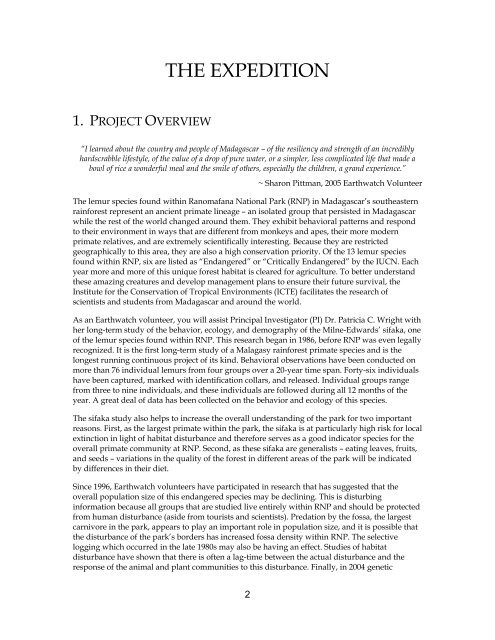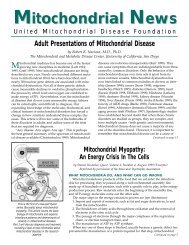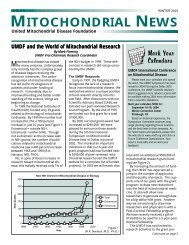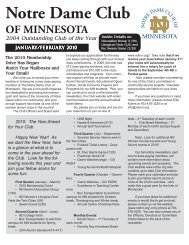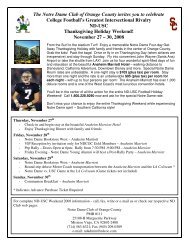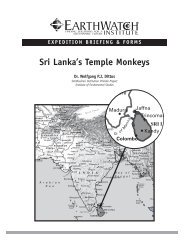Madagascar's Lemurs
Madagascar's Lemurs
Madagascar's Lemurs
Create successful ePaper yourself
Turn your PDF publications into a flip-book with our unique Google optimized e-Paper software.
THE EXPEDITION<br />
1. PROJECT OVERVIEW<br />
“I learned about the country and people of Madagascar – of the resiliency and strength of an incredibly<br />
hardscrabble lifestyle, of the value of a drop of pure water, or a simpler, less complicated life that made a<br />
bowl of rice a wonderful meal and the smile of others, especially the children, a grand experience.”<br />
~ Sharon Pittman, 2005 Earthwatch Volunteer<br />
The lemur species found within Ranomafana National Park (RNP) in Madagascar’s southeastern<br />
rainforest represent an ancient primate lineage – an isolated group that persisted in Madagascar<br />
while the rest of the world changed around them. They exhibit behavioral patterns and respond<br />
to their environment in ways that are different from monkeys and apes, their more modern<br />
primate relatives, and are extremely scientifically interesting. Because they are restricted<br />
geographically to this area, they are also a high conservation priority. Of the 13 lemur species<br />
found within RNP, six are listed as “Endangered” or “Critically Endangered” by the IUCN. Each<br />
year more and more of this unique forest habitat is cleared for agriculture. To better understand<br />
these amazing creatures and develop management plans to ensure their future survival, the<br />
Institute for the Conservation of Tropical Environments (ICTE) facilitates the research of<br />
scientists and students from Madagascar and around the world.<br />
As an Earthwatch volunteer, you will assist Principal Investigator (PI) Dr. Patricia C. Wright with<br />
her long-term study of the behavior, ecology, and demography of the Milne-Edwards’ sifaka, one<br />
of the lemur species found within RNP. This research began in 1986, before RNP was even legally<br />
recognized. It is the first long-term study of a Malagasy rainforest primate species and is the<br />
longest running continuous project of its kind. Behavioral observations have been conducted on<br />
more than 76 individual lemurs from four groups over a 20-year time span. Forty-six individuals<br />
have been captured, marked with identification collars, and released. Individual groups range<br />
from three to nine individuals, and these individuals are followed during all 12 months of the<br />
year. A great deal of data has been collected on the behavior and ecology of this species.<br />
The sifaka study also helps to increase the overall understanding of the park for two important<br />
reasons. First, as the largest primate within the park, the sifaka is at particularly high risk for local<br />
extinction in light of habitat disturbance and therefore serves as a good indicator species for the<br />
overall primate community at RNP. Second, as these sifaka are generalists – eating leaves, fruits,<br />
and seeds – variations in the quality of the forest in different areas of the park will be indicated<br />
by differences in their diet.<br />
Since 1996, Earthwatch volunteers have participated in research that has suggested that the<br />
overall population size of this endangered species may be declining. This is disturbing<br />
information because all groups that are studied live entirely within RNP and should be protected<br />
from human disturbance (aside from tourists and scientists). Predation by the fossa, the largest<br />
carnivore in the park, appears to play an important role in population size, and it is possible that<br />
the disturbance of the park’s borders has increased fossa density within RNP. The selective<br />
logging which occurred in the late 1980s may also be having an effect. Studies of habitat<br />
disturbance have shown that there is often a lag-time between the actual disturbance and the<br />
response of the animal and plant communities to this disturbance. Finally, in 2004 genetic<br />
2


